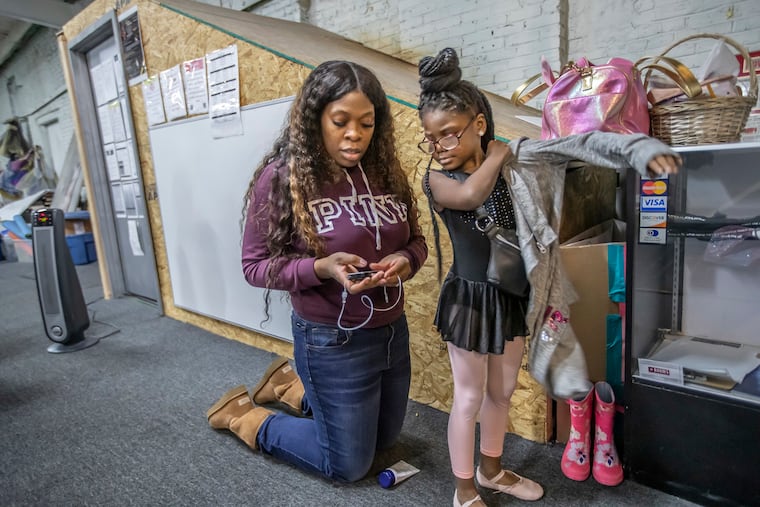Decades of Penn research shows how structural racism affects Black children with type 1 diabetes
Black children with type 1 diabetes experience higher average blood sugar levels, more severe complications and more hospitalizations from the autoimmune condition than white children.

Black children with type 1 diabetes experience higher average blood sugar levels, more severe complications, and more hospitalizations due to the autoimmune condition than white children.
Researchers have offered many theories on the disparities, such as biological differences and access to education about type 1 diabetes, when the pancreas does not produce insulin to regulate blood sugar.
But in a commentary in the journal Pediatrics, two Philadelphia researchers who have spent decades tracking childhood type 1 diabetes say none of these factors can entirely explain the problem. What’s more, this type of reasoning unfairly puts the burden of change on patients.
“Structural racism is really the underpinning of racial disparities,” said Terri Lipman, a pediatric nurse-practitioner and assistant dean at the University of Pennsylvania. She coauthored the article with Colin Hawkes, clinical director of the diabetes center at Children’s Hospital of Philadelphia.
“There’s certainly an element of blame, when it’s proposed that patients need to be better or behaviors need to change,” she said. “The focus needs to be on the health-care team and how we can be educated and change our approach.”
Since the 1980s, Lipman has maintained a database of children diagnosed with type 1 diabetes in Philadelphia. She’s found that while type 1 diabetes is far more common among white children, diagnosis rates among Black and Hispanic children are rising quickly.
Once known as juvenile diabetes, type 1 tends to develop in younger people, unlike type 2 diabetes, which sometimes but not always can be improved through lifestyle changes. No one knows what causes type 1 diabetes and there is no cure.
Lipman’s work contributes to a growing body of research that has found troubling disparities in the care Black children receive after diagnosis and the trajectory of their illness.
A two-part story by The Inquirer in 2020 found:
Nationally, new diagnoses of type 1 diabetes rose at an annual rate of 2.7% among black children between 2002 and 2015, compared with a rate of less than 1% among white children.
During that time period, new diagnoses of type 1 increased even faster among Hispanic children — at a rate of 4% a year.
Lipman and her colleagues were among the first to identify the trend, finding that diagnosis rates for Black children under age 5 in Philadelphia shot up 220% between 1985, when they first started tracking, and 2009, the last year data were published.
» READ MORE: Racial bias in health care hurts patients. But that can change.
“Health care is the canary in the mine. It is an indicator of a sick society,” Jerry McCauley, chief of nephrology at Jefferson Health, whose work helped eliminate the racial gap in kidney transplantation, told The Inquirer last year. “It’s clear where it’s coming from, and if you know enough about the history, you know how it got that way.”
Health-care workers are increasingly aware of how racial bias affects patients But health systems must do more to hold themselves accountable for addressing the problem — rather than putting the burden on families already grappling with a brutal disease, Lipman and Hawkes wrote in their Pediatrics commentary.
“We need to recognize that inequity is due to deficiencies in our knowledge and approach, not to the patients’ lack of ability or desire to learn the components of [type 1 diabetes] management,” they wrote.
» READ MORE: More than 10,000 Black Philadelphians are participating in a Penn study to understand glaucoma
Menda Stewart, whose daughter was diagnosed with type 1 at age 4, told The Inquirer last year that she thinks her training as a nurse has ensured McKenzie gets the care she needs.
Sometimes, when encountering a new care provider, “I don’t tell them every time I’m a nurse,” she said, “and I think sometimes we get brushed off because we are African American.”
“All of McKenzie’s care team is Caucasian, but we don’t have those problems, because I’m McKenzie’s advocate,” she said.
In their commentary, Lipman and Hawkes urged health systems to turn to their patients for help moving forward. Collaborating with community organizations and patient groups can help health systems better understand the problems and develop strategies that resonate with the community they serve.
“As a first step, we must be prepared to be the educated and not the educators,” they wrote.
The Philadelphia Inquirer is one of more than 20 news organizations producing Broke in Philly, a collaborative reporting project on solutions to poverty and the city’s push toward economic justice. See all of our reporting at brokeinphilly.org.